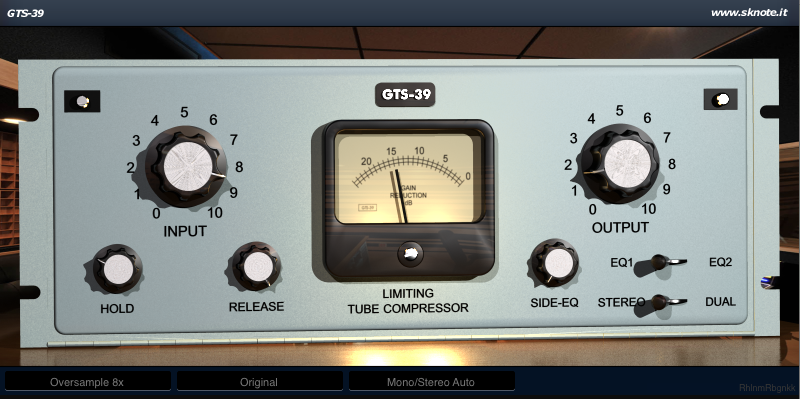Modern electronic music, such as electro house, would be more or less nothing without its bold and earth shaking bass sounds. In today’s session, we’ll show you how the GTS-39 plugin can help you to get your synths to thunder! At its core, the GTS-39 is a limiting tube compressor, modeled after vintage hardware. But that doesn’t mean that it’s only suited for ‘vintage’ genres at all. Not convinced, yet? Well, then let’s get to work!
Here’s the song we’re going to be working with:
From Vintage to Modern
As you can hear there’s a few different bass sounds in the song. We’ll create a sub group by sending them all to a bus so that we can treat them all with a single instance of GTS-39. However, we need to prepare the individual bass tracks before that. That is, we use equalizers to shape each of the tracks, making sure that there’re no clashing frequencies etc. After that, we use our DAW’s faders to roughly balance the levels so that all of the tracks are more or less at the same volume. This is particularly crucial as we’re going to apply quite a heavy amount of compression, and too many or too extreme changes in volume might eventually lead to an unpleasant sound.
All right, time to move on to the GTS-39 compressor. We insert one instance of it on the synth/bass bus, and turn up the INPUT-knob until the VU-meter reflects between -17 and -23dB of gain reduction. Please make sure to turn down your speakers or headphones BEFORE cranking the input gain, as the overall volume can rise drastically. To compensate for that, we back off the OUTPUT-gain considerably. Now it’s time to play around with the HOLD and RELEASE parameters on the left. They can have a pretty noticeable impact on the overall sound, so it’s important to take your time and listen to what they do. In our case, we’re going to ‘abuse’ the two knobs a bit: instead of aiming for a transparent and clean compression curve, we want to exaggerate the movement in the sound. That is, we actually want some of that infamous ‘pumping’ effect, because we feel that that would fit the heavy bass sounds perfectly. We end up setting HOLD to about 10 o’clock, and RELEASE all the way to the right.
Since we’re using GTS-39 during the final mixdown stage (remember that all individual tracks have already been brought into shape) we activate 8x Oversampling via the drop down-menu at the bottom left of the interface. This will give us the best possible quality, at the expense of slightly more CPU power. Here’s a tip: if you want to use the plugin throughout the whole recording, producing, and mixing process, simply choose the “Oversample on export” mode from the drop down-menu. This will save you some CPU while giving you the best possible quality when you bounce your mix to audio.
The interface of the plugin should now look something like this: 
One thing to note: make sure that the side chain compression is only applied after the GTS-39 – otherwise the plugin will do a ‘great job’ on evening out the volume drops (i.e. the ducking). While this definitely demonstrates the immense power of the GTS-39, it’s not quite what our modern dance song needs 😉
The Result
Let’s listen to how our song sounds like with only one single instance of GTS-39 involved. You will notice that it not even sounds more consistent, but also fuller due to the saturation which is introduced by the plugin.
You can download the preset for GTS-39 here: big-electro-house-basses-gts39-preset-fxp
